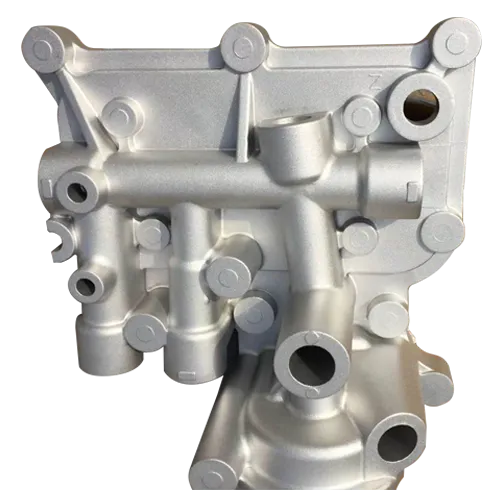Mobile:+86-311-808-126-83
Email:info@ydcastings.com
exhaust fan impeller
Understanding the Importance of Exhaust Fan Impellers
In various industrial and residential applications, the efficiency and effectiveness of ventilation systems are paramount. One of the central components that significantly influences the performance of exhaust fans is the impeller. An exhaust fan impeller is a crucial element that helps move air out of a space, thereby ensuring proper ventilation and air quality.
The primary function of an exhaust fan impeller is to generate airflow by creating a pressure differential between the inside and outside of a building or an enclosed space. Typically, these impellers are designed in various shapes, including axial and centrifugal types, each tailored for specific applications. Axial impellers move air along the axis of the fan, making them suitable for moving large volumes of air at low pressures. In contrast, centrifugal impellers draw air in and then expel it at a right angle, making them ideal for applications requiring higher pressure and efficiency.
The design and construction of the impeller play a significant role in the overall performance of the exhaust fan. Material selection is critical; commonly used materials include plastic, aluminum, and stainless steel. Each material has its advantages and disadvantages. For instance, plastic impellers are lightweight and resistant to corrosion, making them ideal for residential settings. On the other hand, metal impellers are often more durable and capable of handling extreme temperatures, making them suitable for industrial applications.
exhaust fan impeller

Efficiency is another critical factor influenced by the design of the impeller. A well-engineered impeller can drastically reduce energy consumption while maximizing airflow. The blade design, including the angle and width, can affect how effectively the impeller moves air. Impeller blades that are designed with aerodynamics in mind will facilitate smoother airflow and reduce turbulence, which can lead to noise pollution and energy loss.
Moreover, the size of the impeller must be carefully matched to the motor and the enclosure in which it operates. An oversized impeller may lead to excessive power consumption and noise, while an undersized impeller will not provide adequate ventilation. Thus, selecting the right size and type of impeller is critical for achieving optimal exhaust fan performance.
Regular maintenance of exhaust fan impellers is equally important to ensure longevity and efficiency. Dust and debris can accumulate on the blades over time, negatively impacting performance. Regular cleaning and inspections can help sustain airflow and enhance the lifespan of the fan system as a whole.
In summary, the exhaust fan impeller is a vital component in ventilation systems, influencing airflow, energy consumption, and overall efficiency. Understanding the various types, materials, and designs of impellers can help users make informed choices tailored to their specific needs. Whether in a residential environment or an industrial setting, investing in a high-quality exhaust fan impeller can yield significant benefits in terms of air quality and energy savings, ultimately contributing to a healthier and more comfortable living or working space.
-
Why Should You Invest in Superior Pump Castings for Your Equipment?NewsJun.09,2025
-
Unlock Performance Potential with Stainless Impellers and Aluminum End CapsNewsJun.09,2025
-
Revolutionize Your Machinery with Superior Cast Iron and Aluminum ComponentsNewsJun.09,2025
-
Revolutionize Fluid Dynamics with Premium Pump ComponentsNewsJun.09,2025
-
Optimizing Industrial Systems with Essential Valve ComponentsNewsJun.09,2025
-
Elevate Grid Efficiency with High-Precision Power CastingsNewsJun.09,2025











